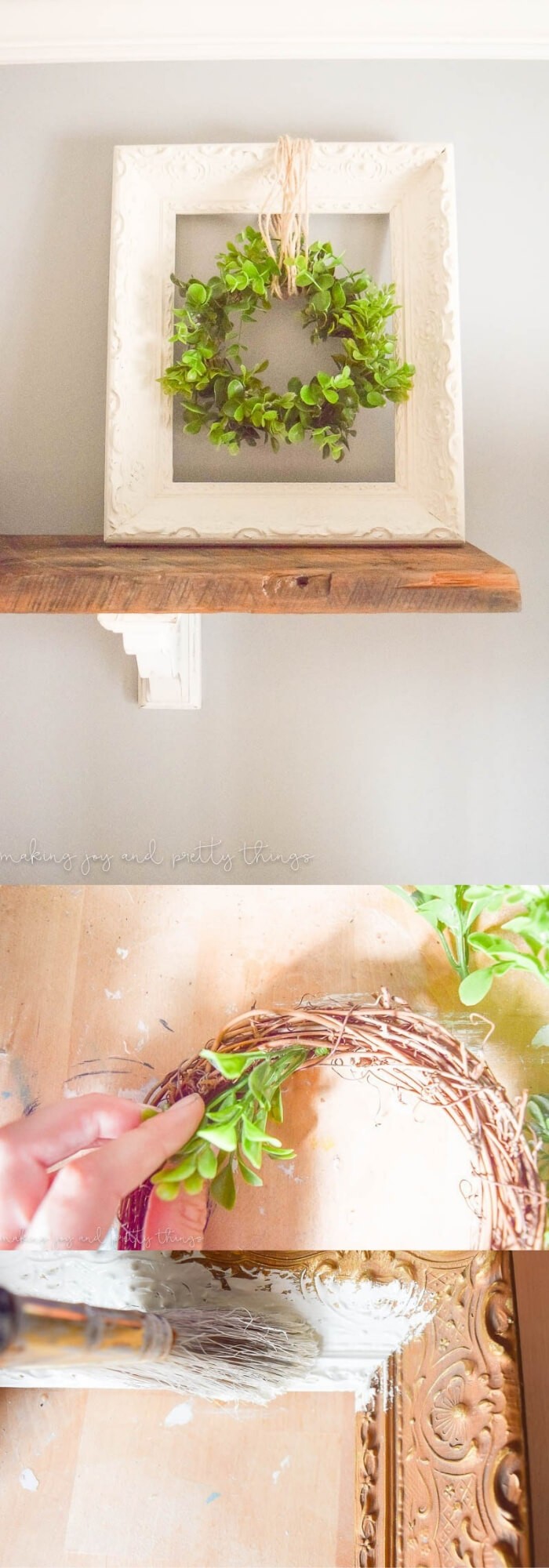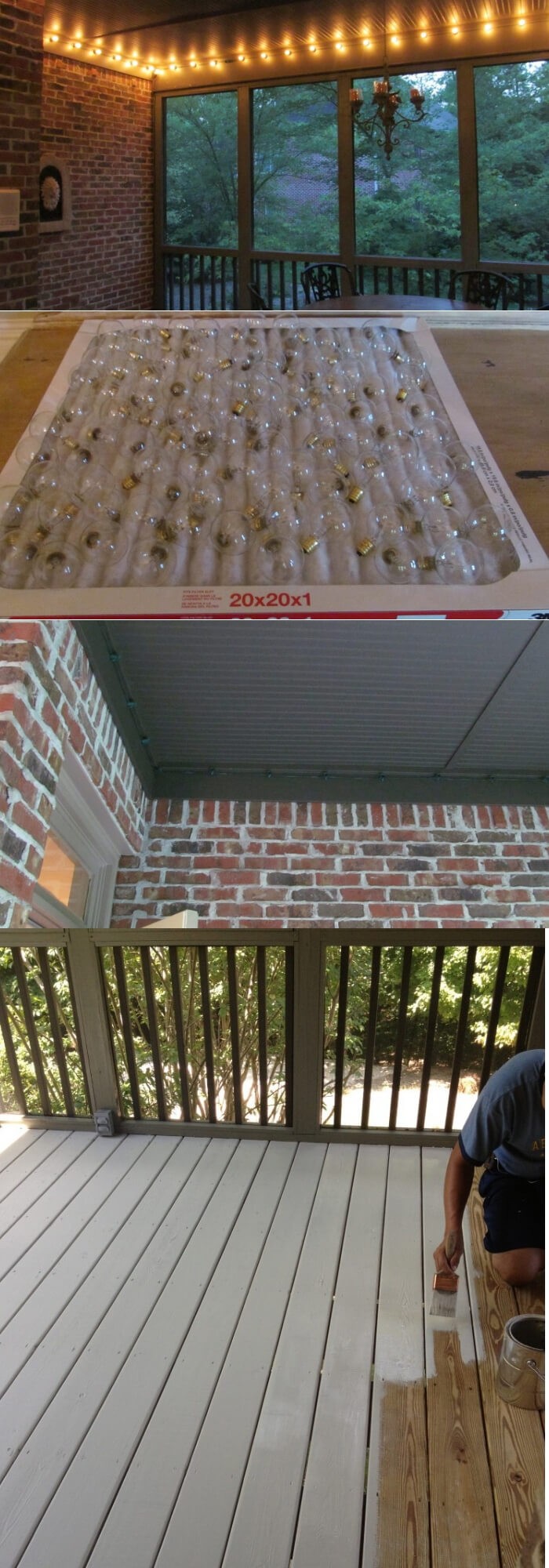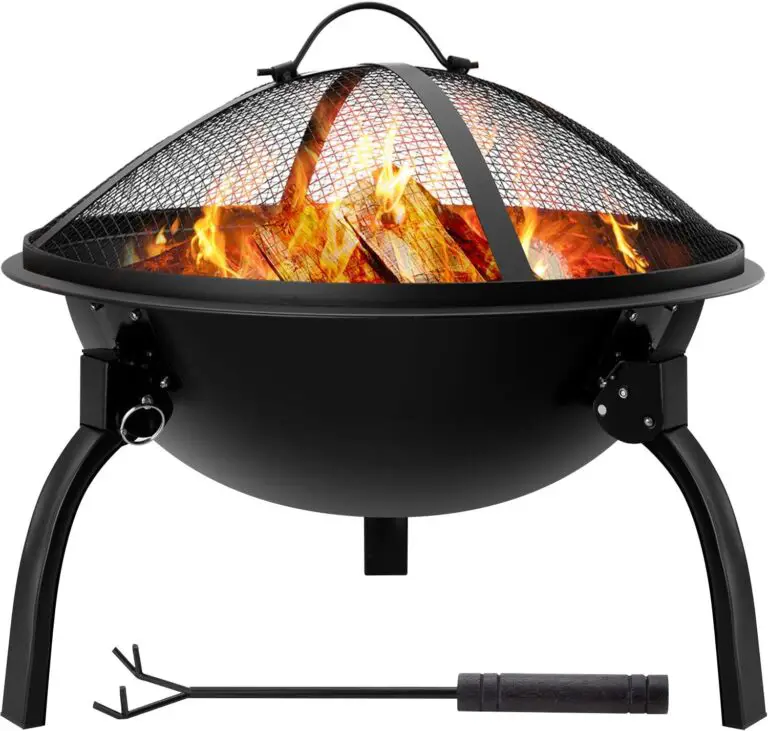42+ Different Types Of Decks: Which One Is Best For You?
When it comes to choosing a deck for your home, there are numerous options available, each with its unique characteristics, advantages, and disadvantages. Before we dive into the specifics, let’s take a step back and consider what you’re looking for in a deck. Is it a traditional wood deck or something more innovative? Are you searching for a space to dine outdoors or perhaps an extension of your indoor living area?
Whatever your requirements, understanding the various types of decks, their pros and cons, and the factors that influence their construction can help you make an informed decision. In this article, we’ll explore the different types of decks, decking materials, styles, and patterns, as well as provide tips on how to choose the right one for your home.
Types of decks
When it comes to decks, variety is the spice of life. Ranging from compact and straightforward to expansive and intricate, these outdoor structures offer a diverse array of options for homeowners seeking to enhance their living spaces. From simplistic to sophisticated, different types of decks cater to distinct tastes and needs, each boasting its own distinctive charm and advantages.
Attached Deck
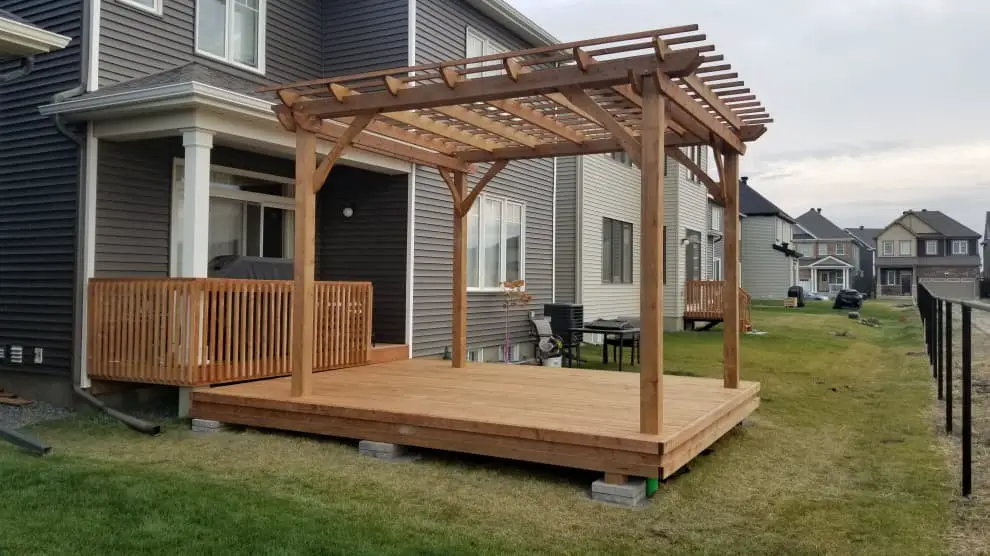
For homeowners seeking to expand their outdoor living space without breaking the bank or embarking on a major construction project, an attached deck is an excellent option. This type of deck can be seamlessly integrated into the back of your house, either as an extension of an existing patio or as part of a new build. The advantages of an attached deck are numerous. Compared to freestanding decks, they are relatively affordable to construct and require no building permit.
Moreover, they can be designed to harmonize with the style of your home, ensuring a cohesive look. However, there are some considerations to keep in mind. To ensure a secure attachment, you’ll need to coordinate with your home’s architect or builder. Additionally, if your home is not adequately framed to support the added weight of the deck, reinforcements may be necessary. Furthermore, if your yard features a slope, an attached deck might not be the most suitable solution.
In terms of cost, the price of an attached deck varies depending on its size and complexity, but generally falls within the range of $15 to $35 per square foot.
Deck for Outdoor Dining
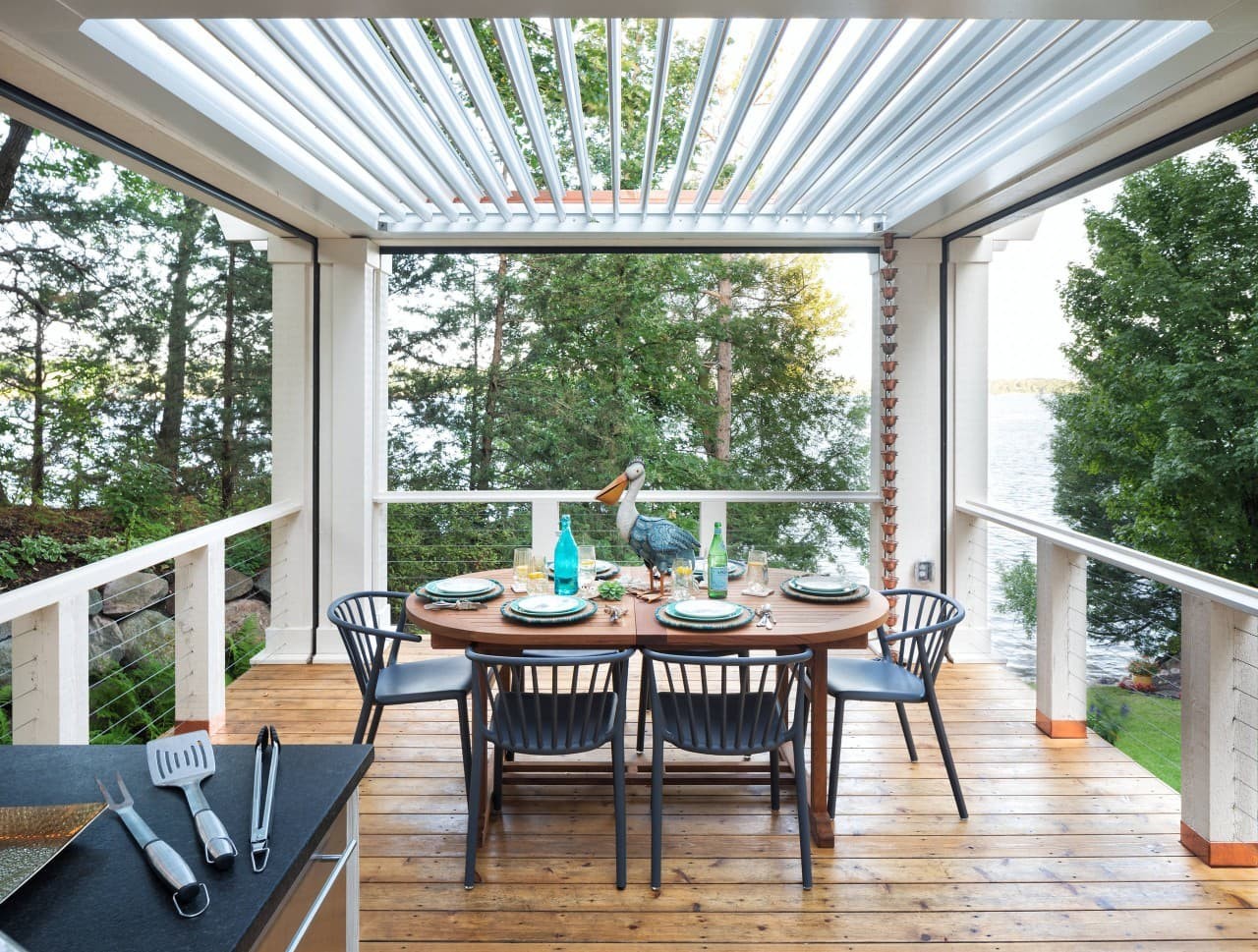
Transforming your outdoor living space into an inviting area for dining and entertainment is easily achievable with the construction of an outdoor deck. A versatile feature that can be crafted using a range of materials such as natural wood, composite lumber, or durable vinyl, an outdoor deck offers endless possibilities to enhance your home’s exterior and create memorable moments with family and friends.
Detached Deck (Island deck/floating deck)
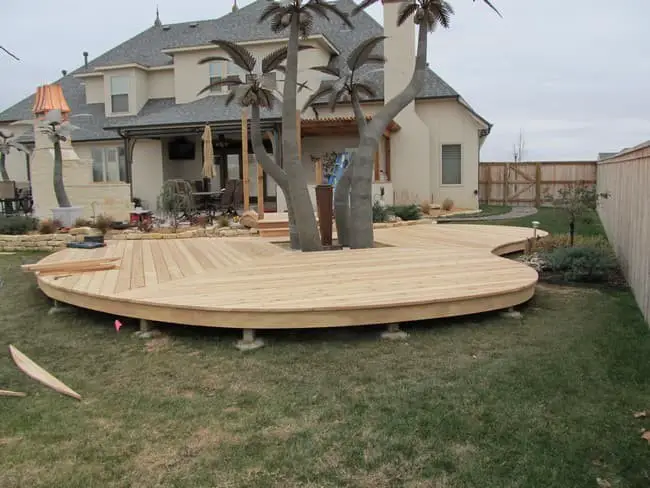
Entryway Deck
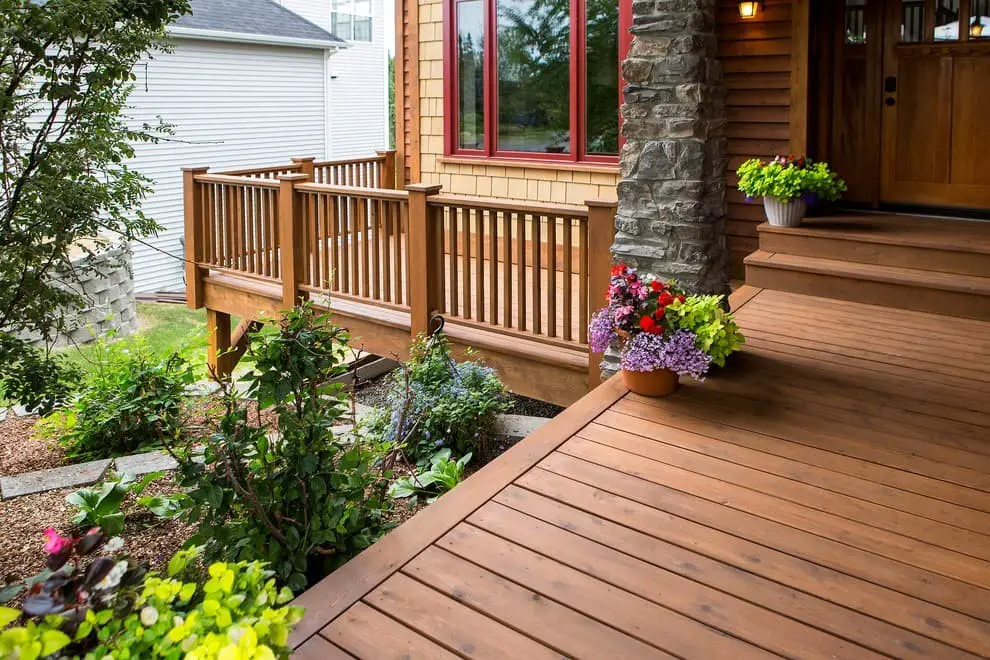
Adding an entryway deck to your home can be a fantastic way to expand your living space without taking up too much room. These versatile structures can serve as an additional entry point, dining area, or even a cozy spot for storing shoes and coats. When considering installing an entryway deck, keep the following factors in mind. First, ensure that the deck is large enough to accommodate the number of people who will be using it.
Second, decide on the type of material you’d like to use – wood is a popular choice, but there are also weatherproof options available that require little to no maintenance. By weighing these considerations, you can create an entryway deck that perfectly suits your needs and lifestyle. In terms of costs, entryway decks can range in price, typically falling between $500 and $2000.
Multi-Tier Deck
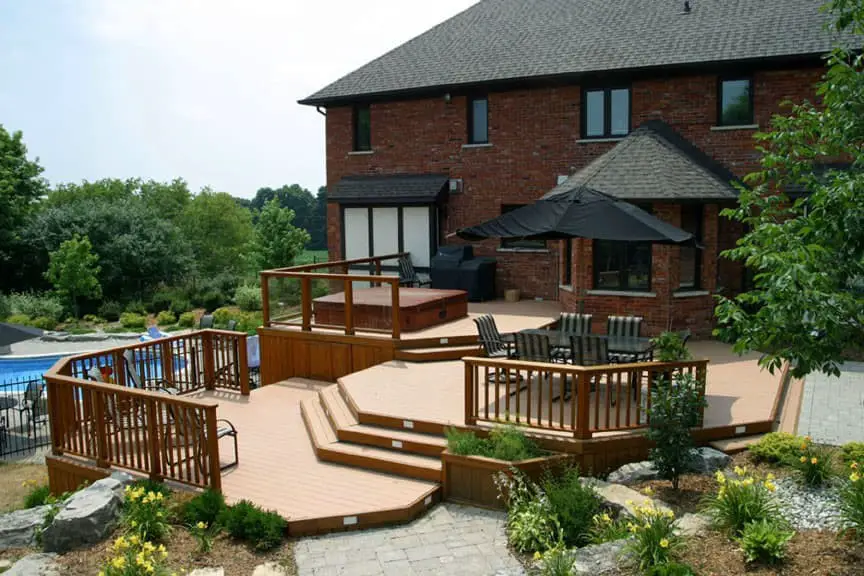
A Multi-Tier Deck is a deck-building strategy that involves stacking multiple decks on top of each other, creating a complex card draw experience for opponents. This approach allows players to mix and match different card combinations, enabling more strategic playmaking. The deck’s versatility stems from the ability to create unique synergies between cards from various sources.
While constructing a Multi-Tier Deck can be challenging due to compatibility issues, when done correctly, it can offer a significant advantage over opponents. To succeed with this approach, players must dedicate time and effort to researching and planning their strategy, ensuring that all decks work harmoniously together. The benefits of a Multi-Tier Deck include the ability to keep opponents guessing about what type of card they’ll draw next, as well as the potential for more strategic plays.
However, the deck’s complexity also means it can be difficult to construct and requires careful planning and execution. The cost of building a Multi-Tier Deck varies depending on the number and type of decks involved, but it can be a significant investment.
Rooftop/Over Garage Deck
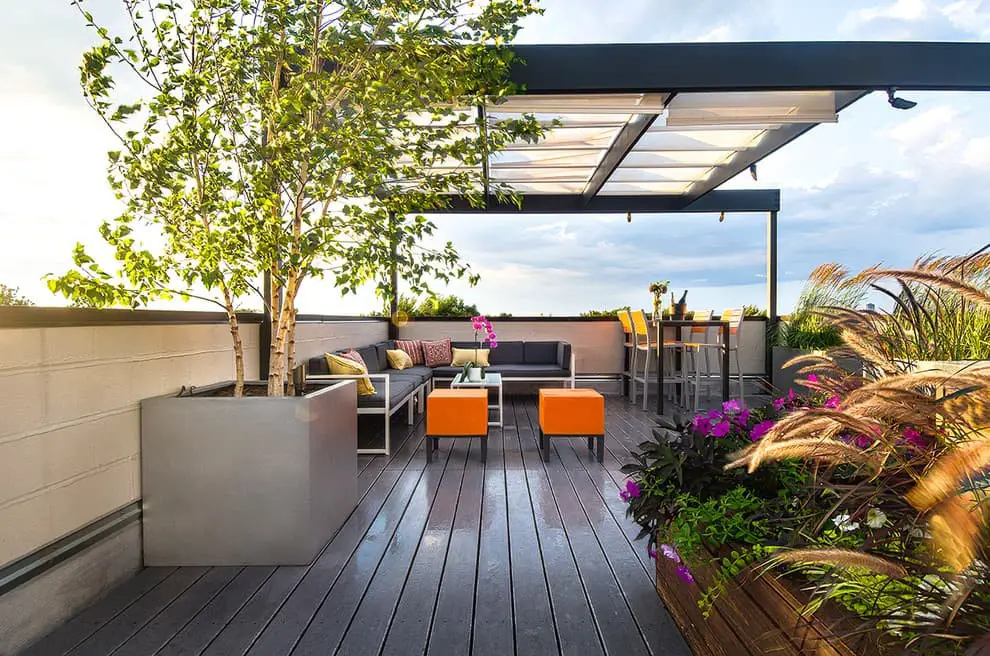
A rooftop deck can be a fantastic addition to your home, providing an unique vantage point and extra living space that’s perfect for smaller homes. However, it’s crucial to consider the weight-bearing capacity of your garage and the added cost of installation before deciding if this type of deck is right for you. With careful planning and consultation with a professional, you can create a rooftop oasis that maximizes your backyard’s potential.
Factors to weigh include the expense of installation, which may be higher than other types of decks due to the extra work involved. Nevertheless, it’s worth exploring the possibility of a rooftop deck if you’re looking to elevate your outdoor living experience.
Side-Yard Deck
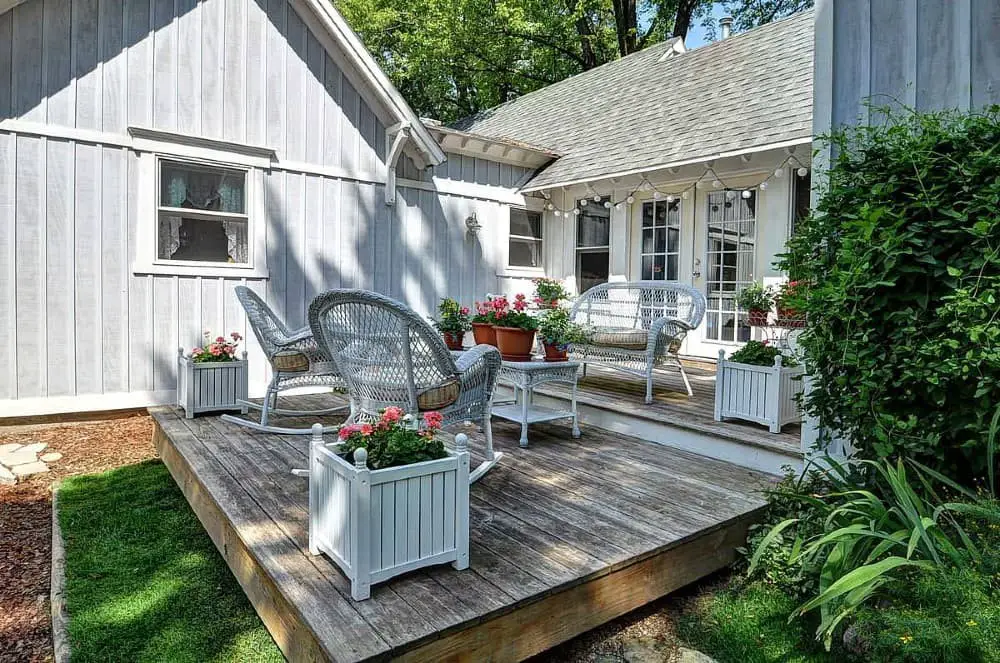
Enjoying your backyard without sacrificing space is a reality with side-yard decks. These versatile structures can be either attached or detached from the house, making them an attractive option for small yards. One of the key benefits of side-yard decks is their accessibility – stairs leading down to the yard provide easy entry and exit points from the house. Additionally, they offer ample space for entertaining guests, making them a perfect choice for hosting social gatherings.
However, it’s essential to consider the potential drawbacks: side-yard decks may struggle to fit seamlessly into larger yards, and as they’re often more exposed than attached decks, they may not provide the same level of privacy. In terms of cost, side-yard decks tend to be more budget-friendly compared to their attached counterparts, with prices varying depending on the size and style chosen.
Swimming Pool Deck
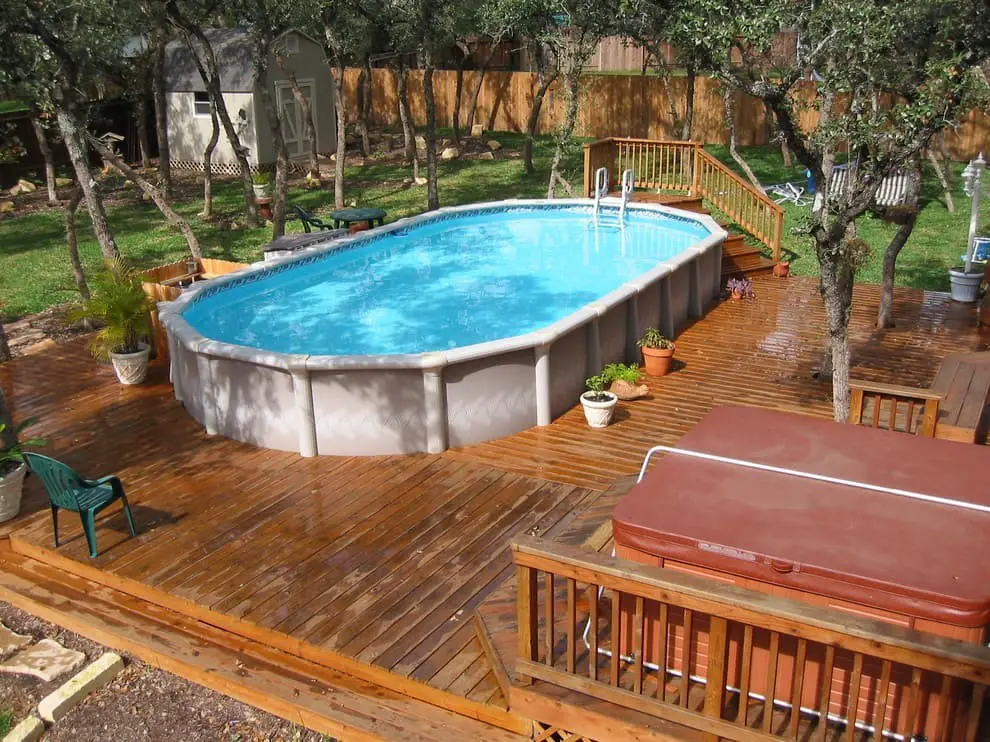
When designing a space around your swimming pool, one crucial aspect is choosing the right type of deck. The style you select ultimately depends on your personal taste and the visual aesthetic you’re striving for. With various options available, it’s essential to weigh the pros and cons before making a decision. On the positive side, decks offer an inviting area to unwind and socialize by the pool, while also providing easy access in and out of the water.
However, there are some drawbacks to consider. Decks can be a significant expense upfront, and they demand regular upkeep to maintain their appearance. For instance, you might want to explore inspiration from our previous post on ’32 Best Above Ground Pool Ideas and Designs’ for guidance on creating your perfect poolside oasis.
Wraparound Deck
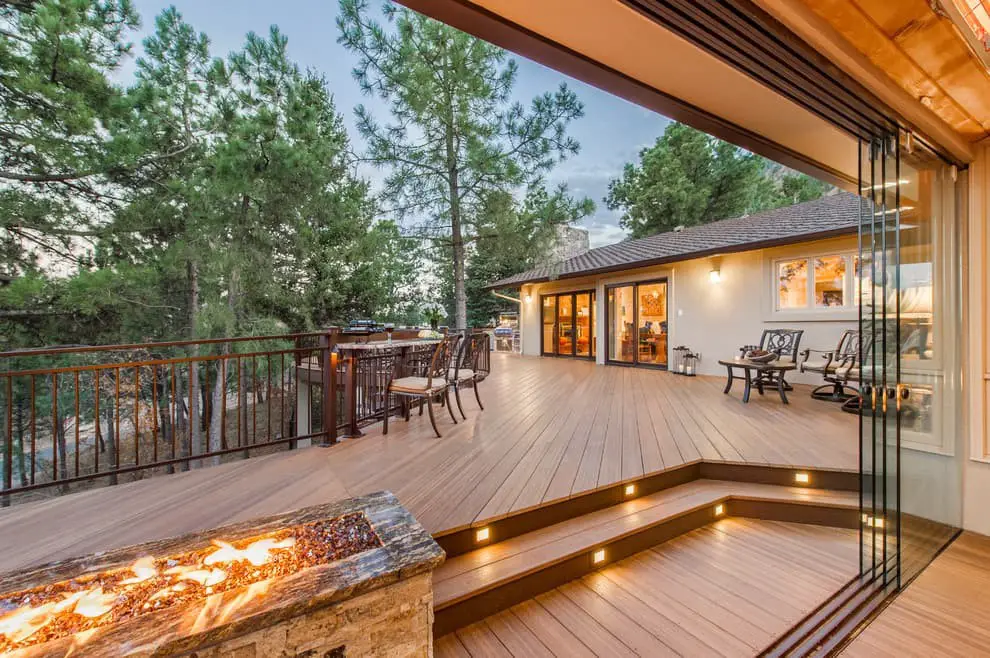
A wraparound deck offers an expansive outdoor living area, seamlessly connecting your home’s exterior to its surroundings. By wrapping around your residence, this type of deck provides a spacious setting for relaxation or entertainment, allowing you to fully immerse yourself in the great outdoors.
One of the key benefits of a wraparound deck is its ability to maximize your outdoor living space.
With ample room for seating and socializing, it’s the perfect spot to unwind with family and friends.
While there are several advantages to consider, it’s essential to weigh the pros against the cons. Some drawbacks include:
– You may need professional assistance to design and build this type of deck, which can drive up costs.
– The overall expense can be substantial, ranging from $500 to $5,000 or more, depending on the size and complexity of your desired design.
Decking materials
When it comes to constructing a deck, one of the first decisions that needs to be made is what type of material to use. The good news is that there are many options available, each with its unique set of benefits and drawbacks. While some decking materials may excel in terms of durability or aesthetics, others might struggle with maintenance or cost.
In this section, we’ll take a closer look at the most popular types of decks, helping you to make an informed decision when it’s time to start your own project.
Aluminum decks
The growing popularity of aluminum decks stems from their numerous benefits. For instance, they require minimal upkeep and boast a remarkable lifespan. Moreover, these decks can be seamlessly integrated into your home’s aesthetic through the wide range of styles available. Their lightweight nature and ease of movement make them an attractive option for those seeking flexibility.
Additionally, the variety of colors and designs on offer ensures that homeowners can find the perfect match for their property. While aluminum decks have some drawbacks – they might not be as sturdy as other types of decks – their affordability is a significant advantage. Typically, these decks are priced lower than their counterparts, making them an accessible option for many.
Cedar decks
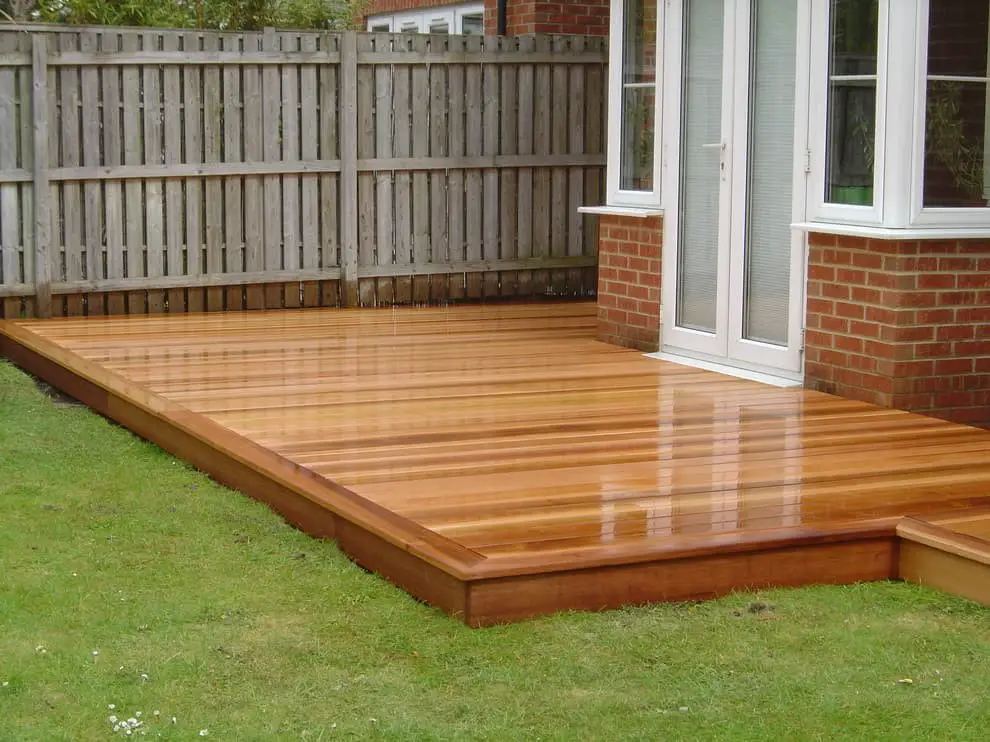
Cedar decks boast a unique combination of natural charm and durability, making them an attractive option for homeowners. One of their standout features is their resistance to decay, insects, and weathering, which ensures they remain sturdy and intact over time. This characteristic also means that cedar decks require less maintenance than other types of decking options, ultimately providing cost-effective value in the long run.
The natural beauty of cedar decks is another major draw, as they can be left unsealed or stained to enhance their natural color and grain patterns. Additionally, these decks are easy to maintain and repair, making them a practical choice for homeowners seeking a low-maintenance outdoor space. If you’re looking for a deck that will stand the test of time, cedar is an excellent option to consider.
While it may come with a higher upfront cost, its durability and ease of maintenance make it a worthwhile investment. Some potential drawbacks to keep in mind include the possibility of high costs, ranging from $15 to $25 per square foot depending on material quality and installation, as well as the need for occasional sealing or staining to protect the wood from the elements.
Composite decks

Composite decks, made from a blend of wood fibers and plastic, have gained popularity due to their low maintenance requirements. Unlike traditional decks, they won’t warp, splinter, or rot, making them an excellent choice for homeowners who want to enjoy the outdoors without the hassle of frequent repairs. Moreover, composite decks are designed to withstand extreme weather conditions, ensuring they remain a beautiful and functional addition to any home.
In terms of aesthetics, composite decks come in a diverse range of colors and styles, allowing homeowners to find the perfect match for their property. While there are some drawbacks to consider, such as potentially higher upfront costs compared to other deck options, many people find the benefits far outweigh the minor trade-offs.
With prices ranging from $25 to $50 per square foot installed, composite decks can be a worthwhile investment for those seeking a low-maintenance and durable outdoor space.
PVC decks
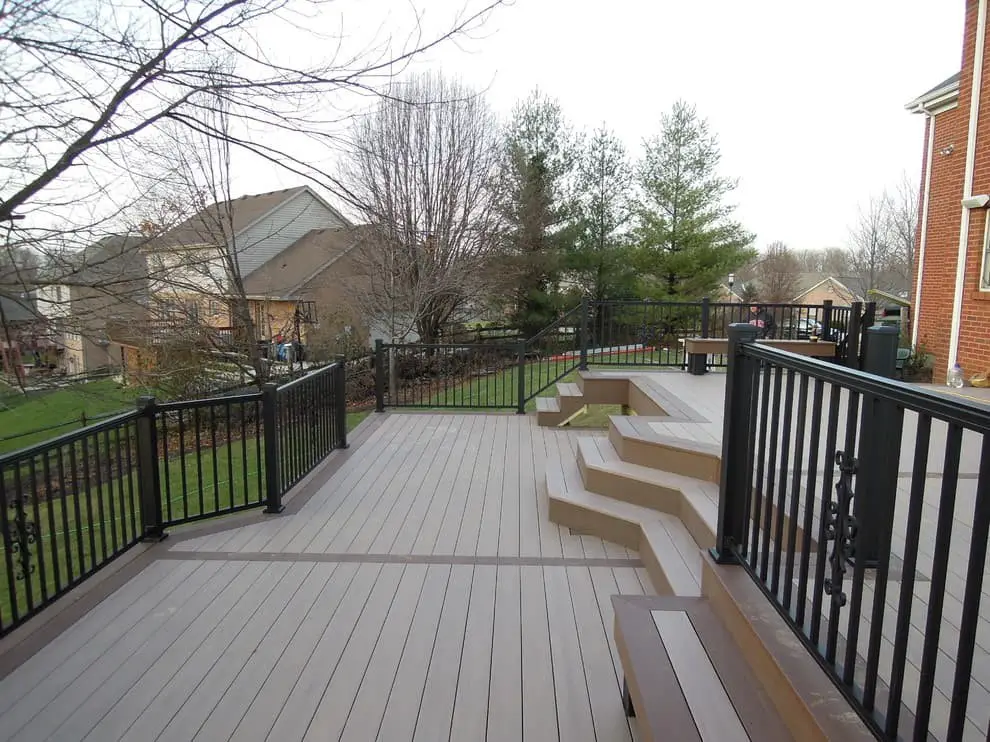
Ipe decks
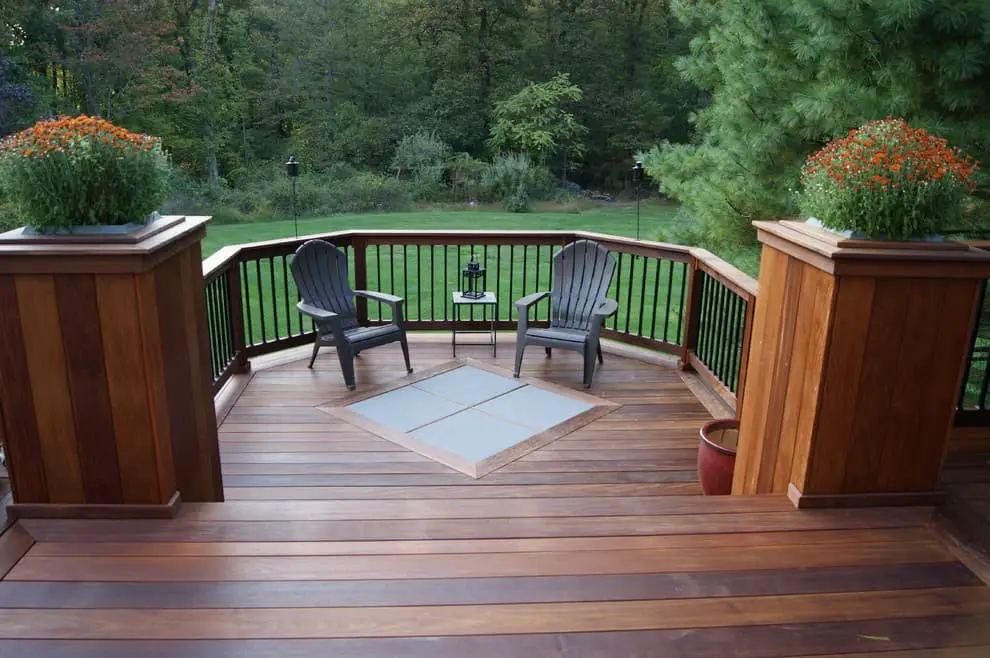
Ipe decks, crafted from the resilient Ipe tree, have garnered widespread acclaim for their exceptional durability and weather-resistance. This premium material can withstand the elements with ease, making it a top pick among homeowners seeking a low-maintenance outdoor space. With proper care, an Ipe deck can last up to 25 years, providing a sound investment for your home’s exterior.
While its benefits are undeniable, potential drawbacks include a higher upfront cost compared to other decking options and the requirement for regular sealing and staining to preserve its attractive appearance.
Modified Wood decks
Modified Wood decks bring together the warmth and character of natural wood with the added benefits of plastic. This innovative material combination provides a durable and low-maintenance option for homeowners, perfect for outdoor spaces where functionality and aesthetics are equally important. The unique blend of wood and plastic offers a beautiful appearance that’s resistant to weathering and insect damage, making it an attractive choice for those who value their outdoor areas.
While Modified Wood decks may be more expensive upfront compared to traditional wooden decks, they offer long-term benefits in terms of reduced maintenance and upkeep. However, homeowners should be aware that these decks can be prone to warping or buckling in extreme weather conditions, a consideration that should be factored into the decision-making process.
Pressure Treated Wood decks
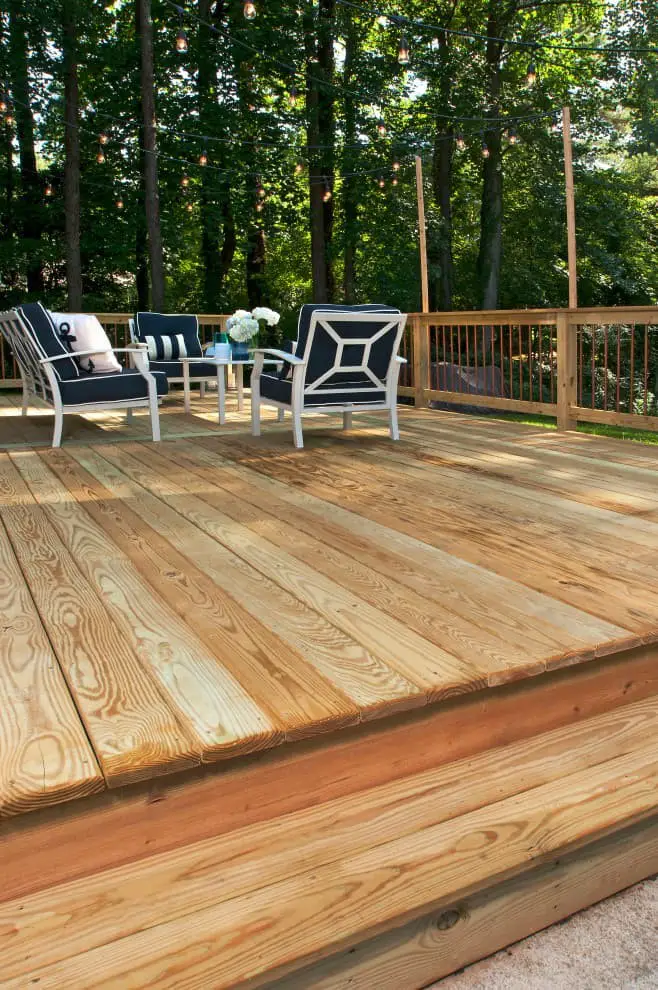
When it comes to choosing a deck material, Pressure Treated Wood (PT) is a popular option due to its affordability and durability. The treatment process involves applying a water-based chemical to the lumber, making it resistant to rot and insect damage. While PT decks are easy on the wallet, they do require some maintenance to ensure their longevity. One key consideration is sealing the wood properly with a water-resistant coating to prevent warping and splitting.
Additionally, PT decks can stain easily, so regular cleaning and sealing are necessary to maintain their appearance. Despite these requirements, PT wood decks offer several benefits, including their low upfront cost, durability, and ease of maintenance. However, it’s essential to weigh these pros against the potential drawbacks, such as warping and staining. Overall, Pressure Treated Wood decks are a budget-friendly option for homeowners looking for a sturdy outdoor space.
Redwood decks
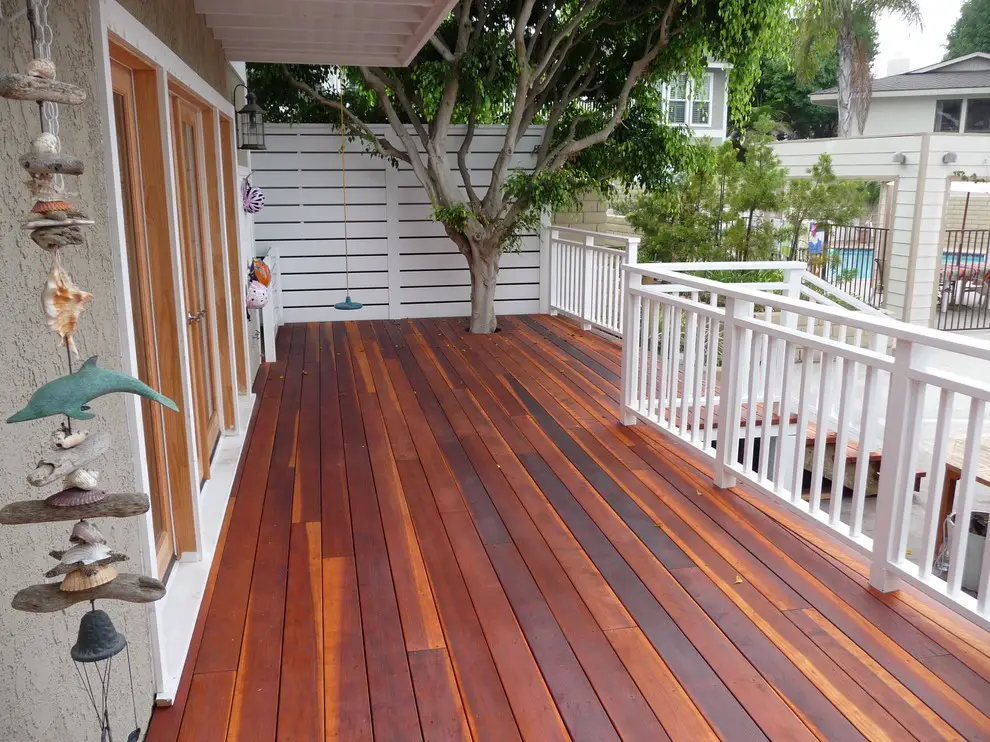
When considering decking materials, Redwood is an excellent option due to its impressive strength and natural resistance to rot and decay. Its organic charm also adds a unique aesthetic appeal that can elevate any outdoor space. While it may have some drawbacks, the benefits of a Redwood deck far outweigh the costs. For instance, Redwood decks can be pricey, but they’re well worth the investment for those seeking a long-lasting, high-quality outdoor area.
Furthermore, regular maintenance is crucial to preserve its beauty, which may require some extra effort. Nevertheless, if you’re looking for a luxurious and durable deck that will withstand the test of time, Redwood is an excellent choice.
Vinyl and Plastic decks

When it comes to choosing the right deck material, there are two main options: vinyl and plastic. Vinyl decks, made from polyvinyl chloride (PVC), offer a premium look and longer lifespan, but at a higher cost. On the other hand, plastic decks, constructed from high-density polyethylene (HDPE), provide an affordable solution with a shorter lifespan. Both materials have their advantages and disadvantages, making it crucial to consider your specific needs before making a decision.
Vinyl decks boast a number of benefits, including increased durability, resistance to scratches and damage, as well as a more aesthetically pleasing appearance. However, they also come with some drawbacks, such as higher upfront costs and the inability to be recycled. In contrast, plastic decks are an economical option that is easy to install but may not stand the test of time.
While vinyl decks have their perks, it’s essential to weigh them against the pros and cons of plastic decks, including lower initial costs and the ability to be recycled. Ultimately, the choice between vinyl and plastic decks depends on your priorities and budget.
Deck styles
When it comes to decking, homeowners are spoiled for choice. With numerous styles to pick from, selecting the one that best suits their needs and preferences can be a daunting task. To help make this decision easier, here’s an overview of some of the most sought-after deck styles:
The Classic Deck
A natural choice for outdoor living spaces, wood-based decks boast a warm, organic appearance that seamlessly integrates with surrounding landscapes. This classic design is particularly well-suited for homeowners seeking a low-maintenance option that will stand the test of time. With proper care and attention, a wooden deck can easily endure for two decades or more, providing a serene oasis for relaxation and entertainment.
Craftsman-Style deck
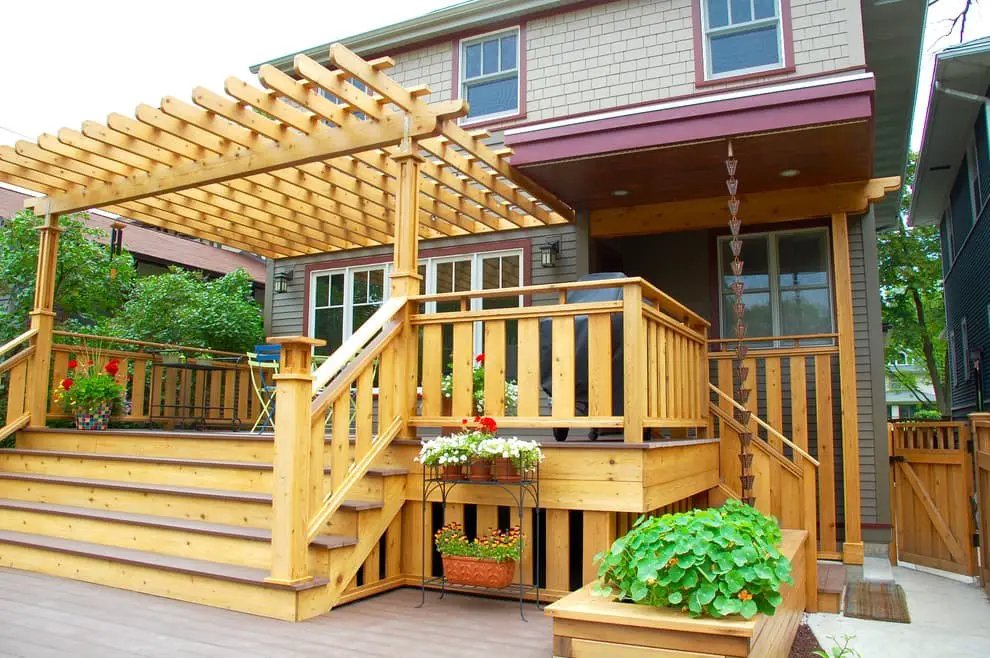
For those seeking a classic, understated deck design, the Craftsman style is an excellent choice. This timeless aesthetic is defined by clean lines, minimal embellishments, and a focus on functionality over flair. A defining feature of this style is its low profile, wide eaves that provide effective protection from the elements. While materials can vary, wood remains the most popular option due to its natural charm and durability.
To bring a Craftsman-style deck to life, it’s crucial to select high-quality materials and partner with an experienced contractor. This type of project can be costly, so it’s essential to get it right the first time to ensure a long-lasting, value-adding addition to your home.
Farmhouse-Style decks
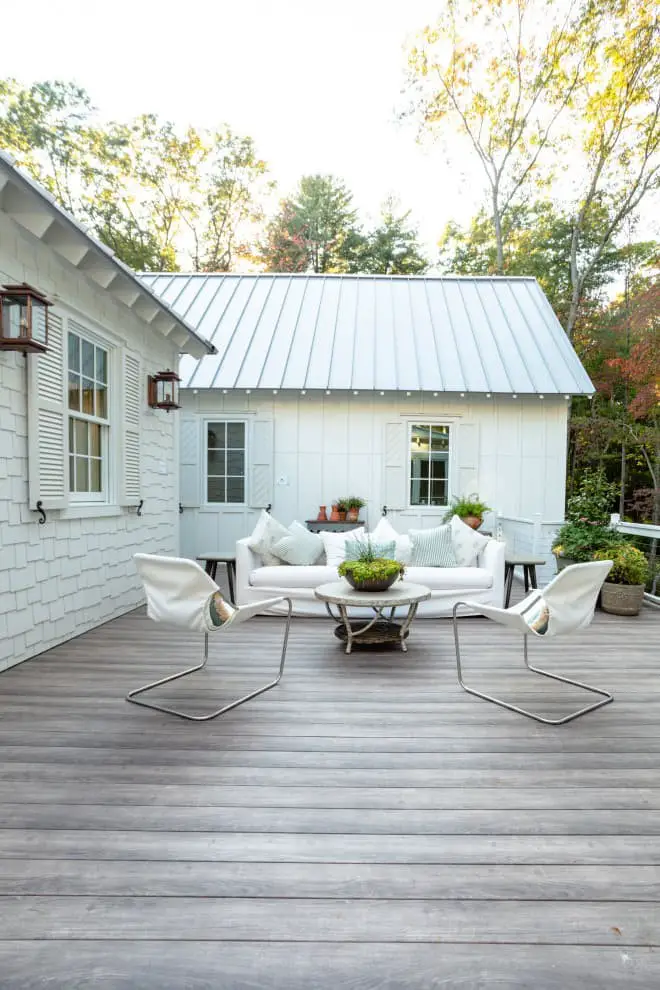
Transform your outdoor space into a cozy retreat with a farmhouse-style deck. Characterized by its simplicity and rustic charm, this type of deck is designed to bring the outdoors in. Made from durable wood or composite materials, it features wide plank flooring and railings that create a welcoming atmosphere. Imagine sipping your morning coffee on a quiet summer day, surrounded by lush greenery and the soothing sounds of nature.
If you’re looking for an easy-to-maintain deck that adds character to your home without requiring too much upkeep, a farmhouse-style deck is the perfect solution. It’s ideal for homeowners who want to enjoy the great outdoors without sacrificing precious time or energy.
Mid-Century Modern decks
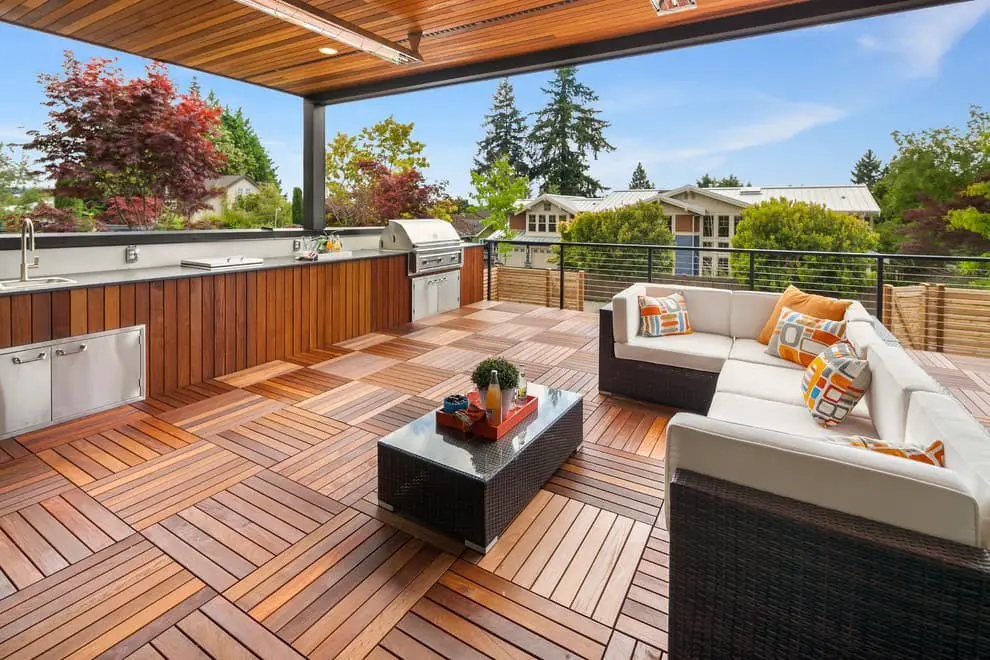
The allure of Mid-Century Modern decks lies in their understated elegance, making them a favorite among homeowners seeking a contemporary look for their property. Characterized by low profiles and materials such as wood or composite, these decks can be tailored to fit various architectural styles, including split levels, A-frames, and multi-level designs.
Whether you’re aiming to elevate the curb appeal of your home or create an inviting outdoor space, a Mid-Century Modern deck is an excellent option for those craving a sleek, modern aesthetic.
Scandinavian-Style decks
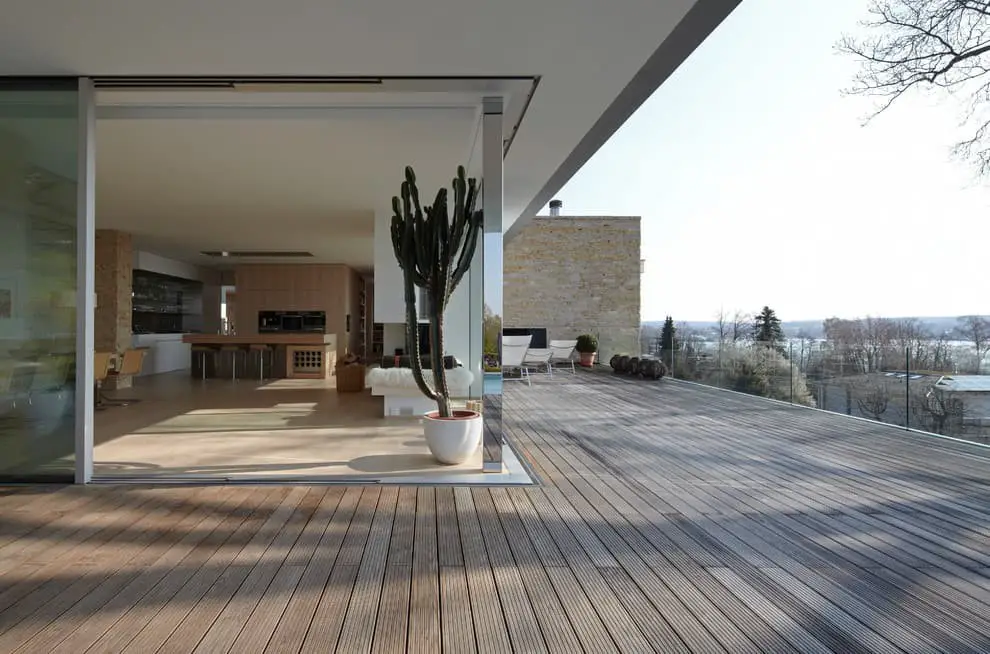
For those seeking a modern aesthetic for their home, Scandinavian-style decks offer a perfect solution. Characterized by clean lines and minimalist designs, these decks are often crafted from untreated wood that will gradually weather to a stunning silver-grey hue over time. This low-maintenance option is ideal for homeowners who value simplicity and ease of upkeep.
Alternatively, those with a penchant for traditional designs might prefer British-style decks, which typically feature intricate details and are constructed using treated wood. While these may be more expensive upfront, they can provide years of durability and charm if properly cared for.
Traditional-Style decks
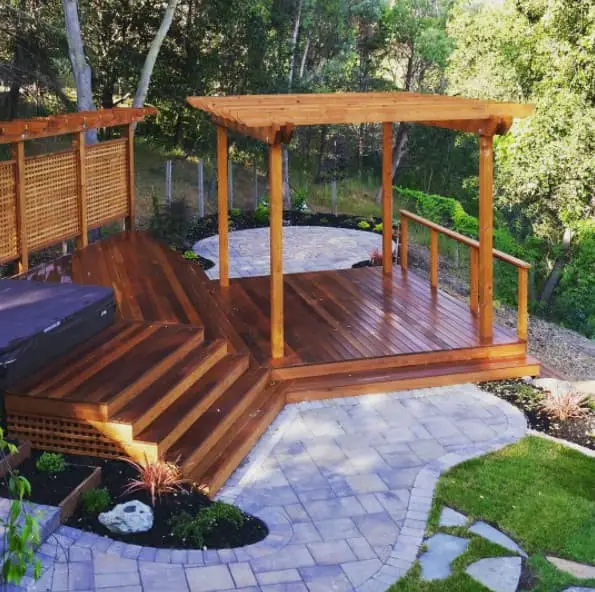
The quintessential traditional-style deck is characterized by its simplicity, featuring a palette of basic shapes such as squares and rectangles. This timeless design aesthetic makes it an ideal choice for homeowners seeking a classic look that exudes warmth and coziness. With its understated elegance, the traditional-style deck is a versatile option that can seamlessly integrate into any architectural style.
Decking patterns
When it comes to selecting a decking pattern, there’s a wide range of options to consider. The choice ultimately boils down to your individual taste and the aesthetic you’re aiming for. Some of the most sought-after styles include
Chevron and Herringbone Decking Patterns
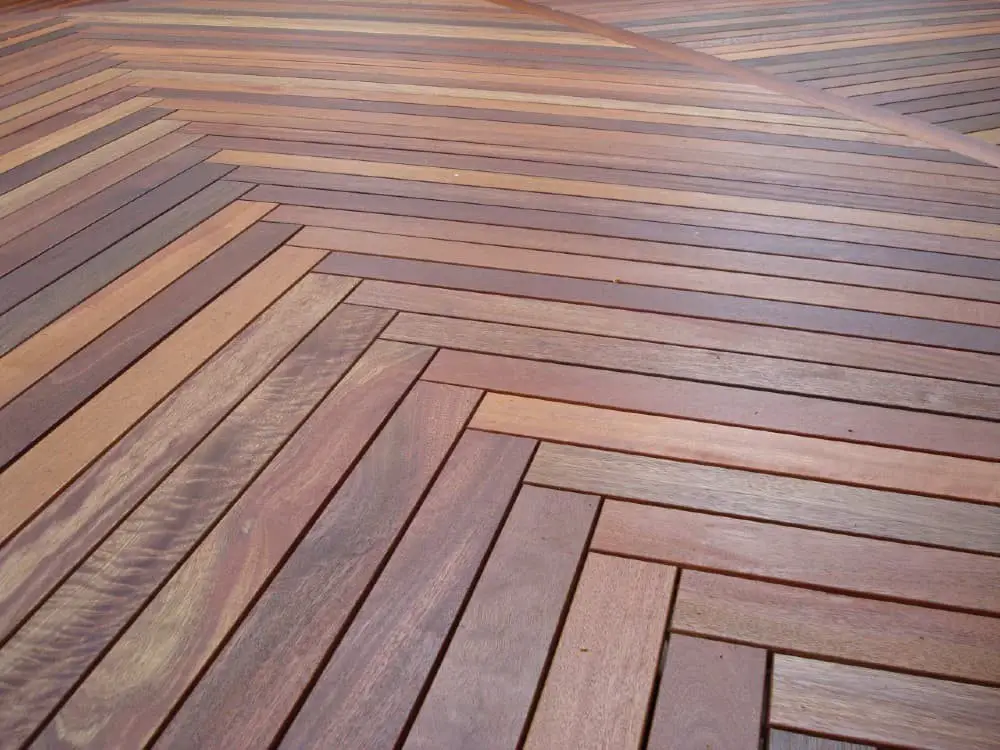
Chevron and herringbone designs are dual-purpose wonders that can breathe new life into various decking styles. By cleverly alternating boards in opposing directions, these patterns inject visual intrigue and tactile texture to any outdoor space. While these designs may require some skill and patience to install correctly, the end result is well worth the effort.
If you’re not confident in your DIY abilities, it’s always a good idea to consult with a professional or seek guidance from an experienced deck builder. However, if you’re up for the challenge, the payoff can be tremendous – these patterns have the power to transform your deck into a true showstopper that will stand out from the crowd.
Diagonal Decking
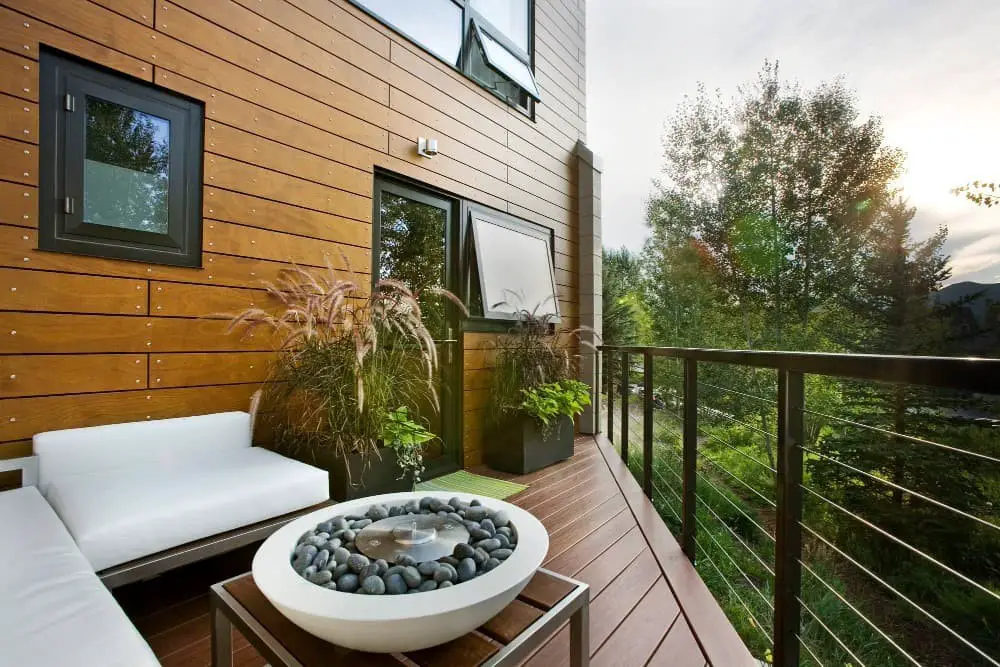
Diagonal decking has gained popularity in recent times, offering a distinctive aesthetic that can be employed to inject subtle curves into an outdoor setting. This versatile style can be constructed using a range of materials, encompassing wood, composite, and PVC options.
Diamond decking
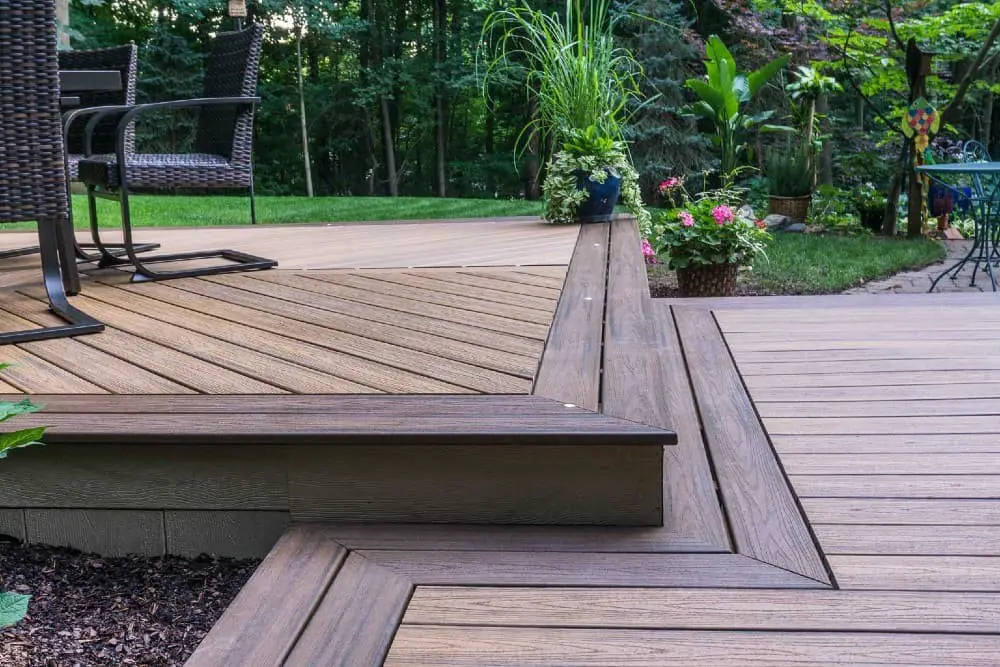
A significant advantage of diamond decks lies in their exceptional durability, allowing them to withstand the test of time with minimal upkeep required. Their innate aesthetic appeal also contributes to their widespread popularity among homeowners. Furthermore, diamond decks are available in a diverse range of colors and styles, making it possible for you to find the perfect match for your home’s unique character.
Notably, these decks are not only visually appealing but also offer an affordable and streamlined installation process, further solidifying their appeal.
Horizontal Decking
The allure of horizontal decks is undeniable, particularly among homeowners seeking a stylish and low-maintenance solution for their outdoor spaces. By offering a sleeker aesthetic and relatively affordable construction, these decks have become increasingly popular in recent years. Moreover, they tend to require less upkeep than traditional decks, making them an attractive choice for individuals who wish to devote less time to caring for their yard.
For those seeking a modern touch that’s both easy on the eyes and the wallet, horizontal decking is definitely worth considering.
Parallel decking
When it comes to constructing decks, many players focus on building single, cohesive collections of cards. However, there’s another approach: creating parallel decks that share the same pool of cards, but are constructed separately. This strategy can yield incredibly powerful synergies between cards that might not normally be paired together. The key challenge lies in ensuring that each deck’s individual components work harmoniously with one another.
For those seeking a thrilling building experience and a truly one-of-a-kind deck, parallel decks offer an intriguing opportunity to push the limits of card synergy.
Parquet or basketweave decks

Parquet and basketweave decks are two distinct types of decking materials that offer unique characteristics and benefits. Parquet decks, crafted from small wooden squares, exude elegance and sophistication, making them a popular choice for formal settings. In contrast, basketweave decks also employ small wooden squares but present a rustic charm, often used in outdoor environments where durability and weather-resistance are essential.
Picture frame decks
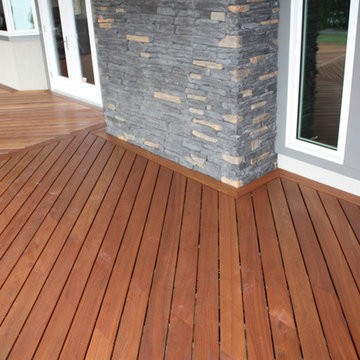
Picture frame decks, a staple in many backyards, boast a robust design comprising multiple frames that securely fasten deck boards. Their exceptional sturdiness allows them to bear considerable weight, rendering them an ideal choice for families and friends who enjoy spending time outdoors. Furthermore, their straightforward installation process makes them a preferred option among homeowners seeking to enhance their outdoor living spaces.
Pinstripe decks
For those seeking a timeless aesthetic with a contemporary flair, pinstripe decks are an excellent choice. Their understated design lends itself to creating a refined and polished appearance that’s sure to turn heads. What’s more, these versatile decks can be dressed up or down depending on the occasion. Whether you’re attending a black-tie event or just lounging with friends, pinstripe decks will undoubtedly bring a touch of sophistication to your ensemble.
Furthermore, their universal appeal makes them accessible to players of all skill levels, ensuring everyone can enjoy the classic look and modern flair they offer.
Single-width decks
While single-width decks are ideal for those seeking functional outdoor spaces without sacrificing too much real estate, their narrower design also poses some limitations. The compact width of these decks – typically spanning only one or two boards – makes them a great option for small areas or budget-conscious homeowners. Additionally, the reduced size often translates to lower costs compared to broader deck designs.
Nevertheless, single-width decks may prove more demanding to use than their wider counterparts, particularly when attempting to accommodate multiple pieces of furniture or lush greenery.
Tile decks
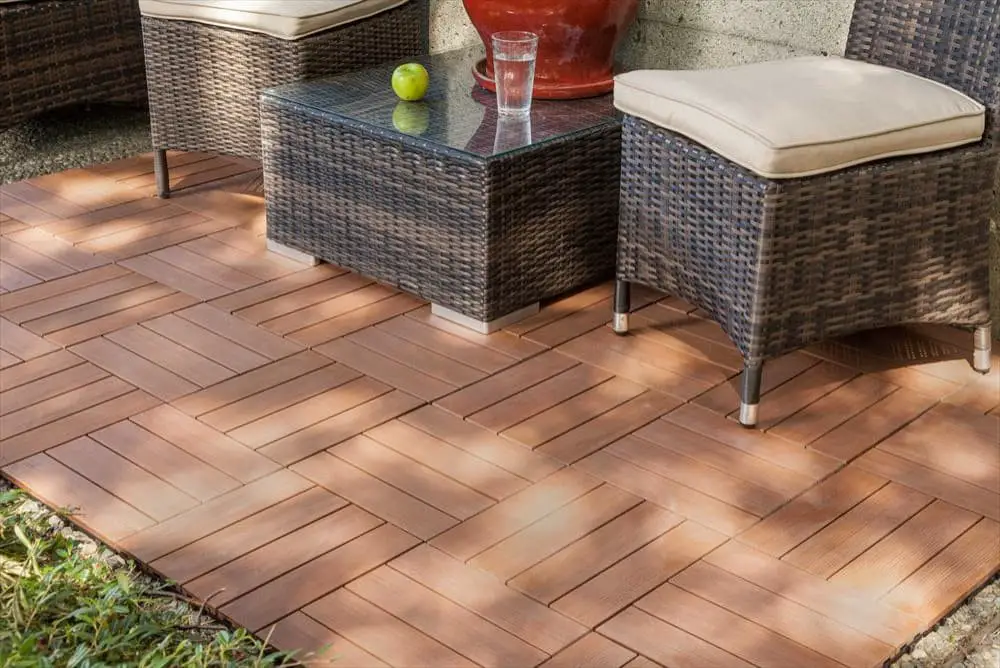
When it comes to choosing a low-maintenance deck surface, tile decks are an increasingly popular option among homeowners. One of the key advantages is the wide range of colors and styles available, allowing you to select a perfect match for your home’s aesthetic. Moreover, tile decks boast impressive waterproofing capabilities, eliminating concerns about rain or snow damage – giving you peace of mind as you enjoy your outdoor space.
V-shaped decking
When seeking to bring an airy and open ambiance to your outdoor space, V-shaped decking stands out as a compelling choice. Characterized by decks that converge inwardly, this design yields a more expansive feel, perfect for homeowners looking to make the most of their backyard. Furthermore, V-shaped decking can be an effective means of establishing privacy without relying on physical barriers like fences.
It’s an ideal solution for those seeking to create a seamless transition between indoors and outdoors.
Decking Construction
When it comes to decking constructions, there is a wide range of options available, each offering its distinct advantages and disadvantages. Among the most prevalent types are platform, pier, and beam decks, which share a common goal – to provide a sturdy foundation for your outdoor living space. While they may differ in their design and functionality, each has its unique strengths and weaknesses that should be considered when planning your project.
Freestanding decks
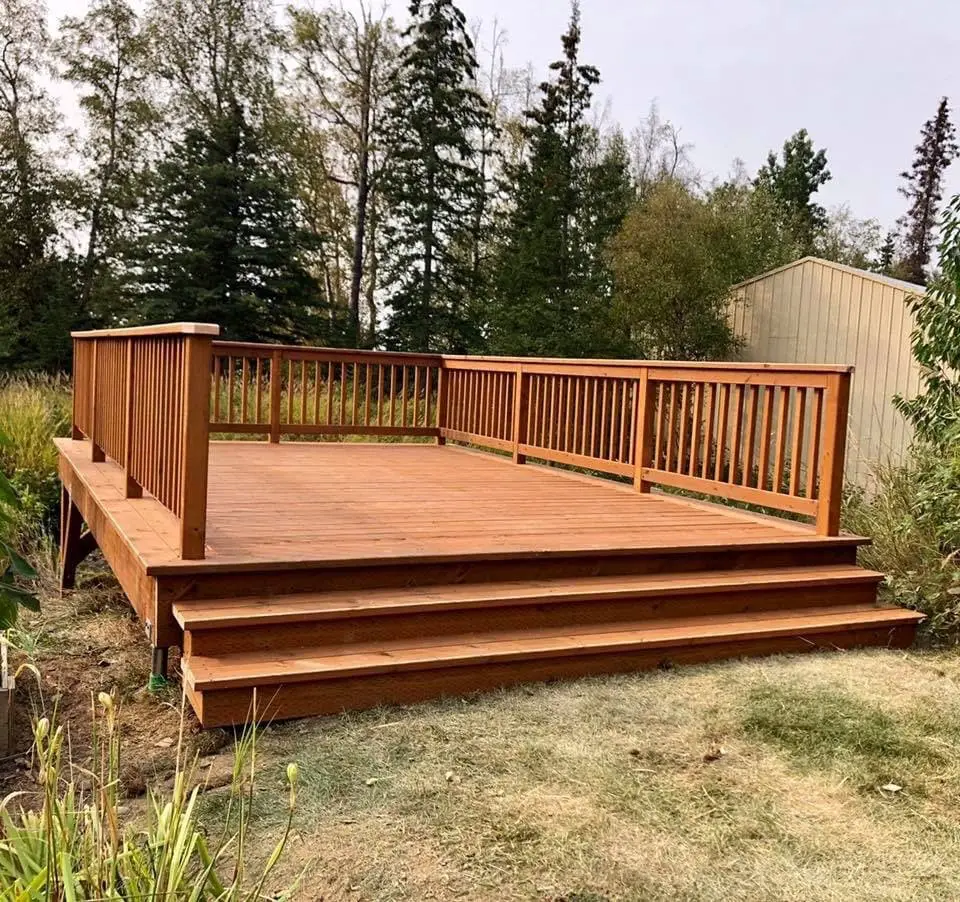
When it comes to freestanding decks, homeowners have a lot to love. One major advantage is that they can be installed almost anywhere on the property, making them an ideal choice for properties without accessible decking areas. This flexibility also means you don’t need to worry about connecting the deck to your house, which can be a big plus.
Plus, freestanding decks tend to be less expensive than other types of decks, making them a popular option for budget-conscious homeowners looking to add some extra outdoor living space. Of course, when it comes to choosing the perfect style for your freestanding deck, there are several factors to consider, including the size and shape of your property, the existing landscaping, and your own personal preferences.
Whether you’re looking for a sleek and modern design or something more rustic and cozy, there’s a freestanding deck style out there that’s sure to fit your needs.
Multilevel decks
Multilevel decks offer a distinctive aesthetic by featuring multiple levels, which can be either straight or curved. For homeowners seeking a unique touch, these decks provide an attractive option. One of the primary advantages of multilevel decks is their ability to increase usable space within the home. This is particularly beneficial for those with limited yard areas.
Moreover, multilevel decks can serve as ideal gathering spaces for entertaining friends and family, as they offer ample room for socializing. When contemplating a multilevel deck installation, it’s essential to consider two key factors: ensuring your yard can accommodate the added levels and assessing how the increased height will impact your home’s overall appearance.
Platform decks
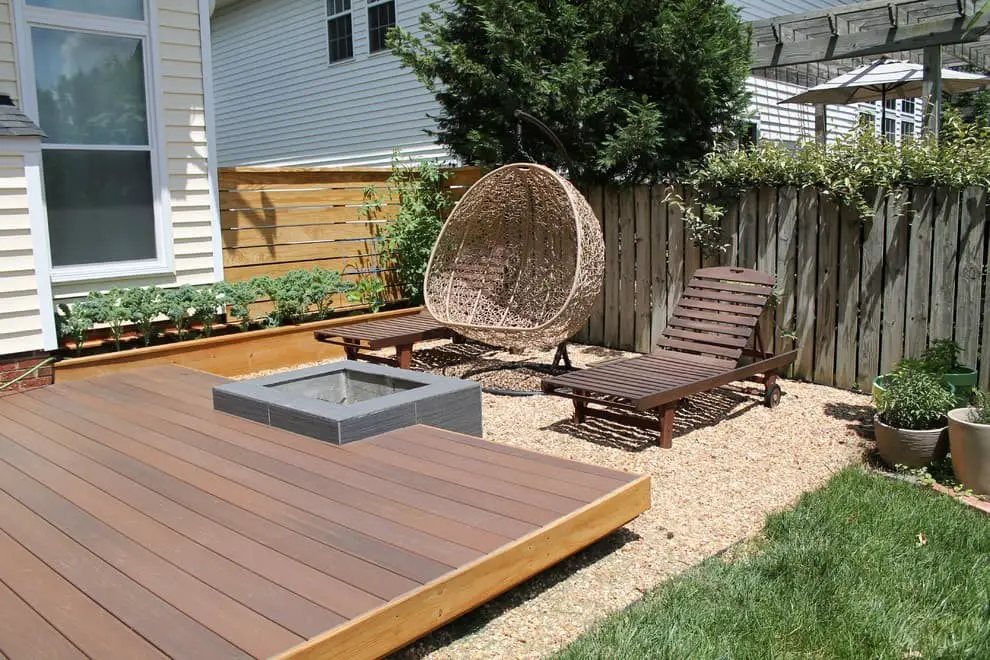
When it comes to navigating urban landscapes, platform decks prove to be an efficient means of transportation. However, their limitations become apparent when faced with longer journeys or heavy loads. For those seeking speedy commutes, these platforms remain the top choice.
Raised decks
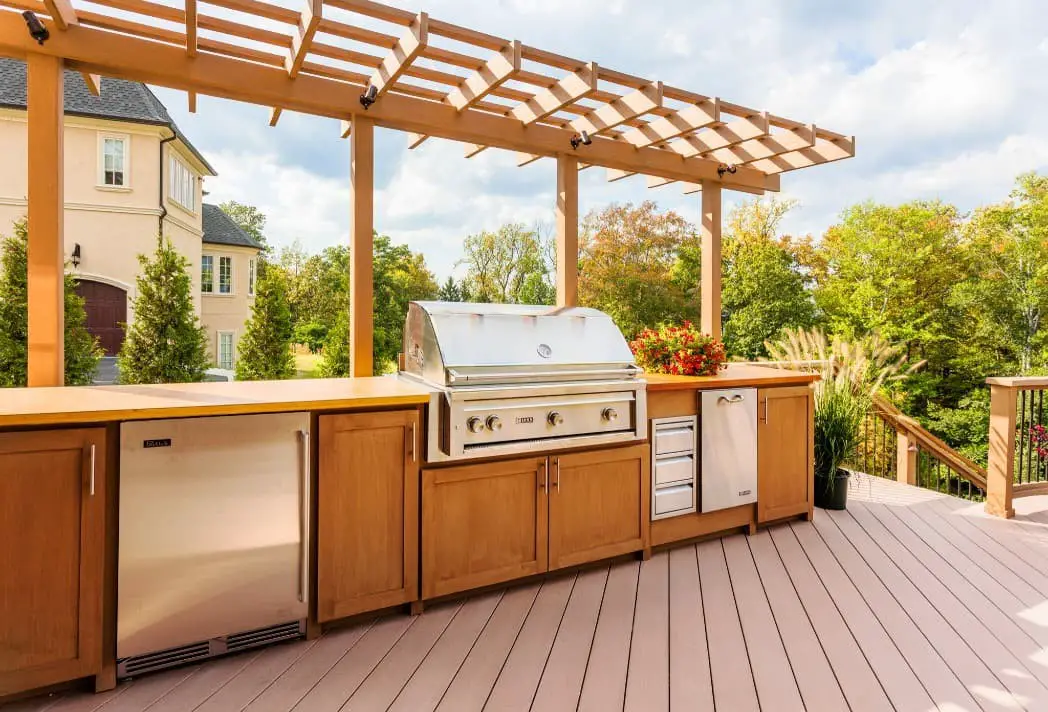
When it comes to decking, warmer climates tend to favor elevated structures that promote unobstructed airflow. This design choice also has its practical advantages – it’s much more difficult for pets or small children to accidentally slip off a raised deck. While wood is the traditional material of choice for constructing raised decks, other options are available for those looking to mix things up.
If you’re considering a raised deck installation, it’s essential to consult with a professional to determine the best approach for your specific home and climate.
Two Story decks
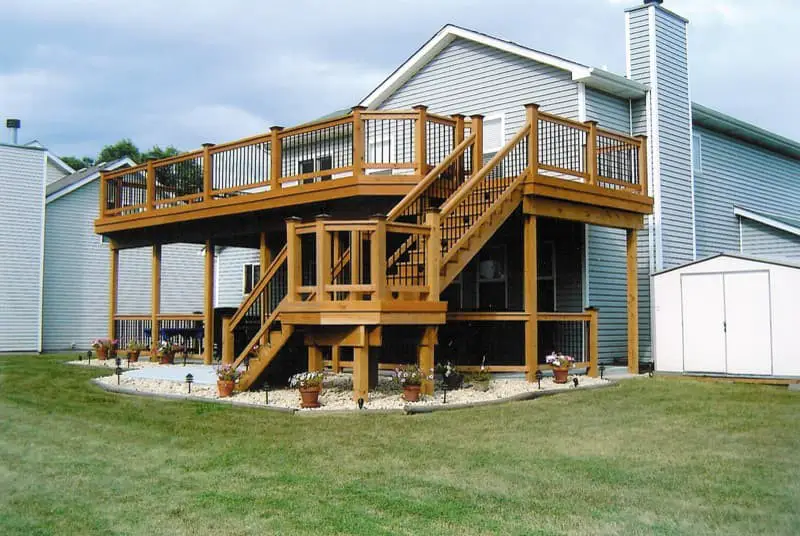
For those seeking to elevate their outdoor living experience, a Two-Story deck offers an unparalleled level of sophistication and functionality. Characterized by its dual levels, this versatile design provides ample opportunities for both relaxation and entertainment. Whether you’re hosting gatherings or simply enjoying the fresh air, a Two-Story deck is sure to impress.
Pier decks
Pier decks, a staple in many homes, offer a unique blend of functionality and aesthetic appeal. By attaching to the house and relying on piers or posts for support, these structures can seamlessly integrate with their surroundings. Interestingly, pier decks often rely on pressure-treated wood as the primary material, thanks to its impressive resistance to decay and rot – a testament to its durability in even the most demanding environments.
Beam decks
One of the most straightforward and practical deck designs is the beam deck. Characterized by a series of parallel beams supporting decking boards, this style is particularly well-suited for spaces with limited area, as it eliminates the need for support columns or foundation systems.
FAQs
What type of deck lasts the longest?
The lifespan of a deck is influenced by various factors, primarily climate and weather conditions. On average, well-maintained decks can last between 15-25 years. Different types of decks exist, with wooden decks being a favored choice for their natural charm and resilience. They are often preferred over other options due to their aesthetic appeal.
What is the cheapest type of decking?
While pressure treated wood decking is the most affordable option, it may not be the most durable or long-lasting choice for your deck. On the other hand, composite decking can provide a lifespan of up to 25 years, making it a worthwhile investment if you’re looking for a more permanent solution. For those seeking a low-maintenance option, vinyl decks are an excellent alternative that requires little to no upkeep.
Conclusion
When designing a deck, homeowners are faced with a multitude of decisions. The choice of materials, shape, and size all contribute to the final product. With so many variables at play, it’s easy to feel overwhelmed by the sheer number of options. However, having a solid understanding of each type of deck can help streamline the decision-making process, ultimately leading to a design that perfectly complements your home.
Related Posts
When it comes to pairing a garage door color with a house, the goal is often to create a cohesive look that boosts curb appeal. While personal preference plays a role, there are some general guidelines to keep in mind. For instance, a yellow house can be paired with a range of garage door colors, from warm neutrals like beige or tan to bold choices like red or orange. The key is to find a color that complements the yellow hue without overpowering it.
Similarly, green houses offer a wide range of possibilities, from natural earth tones to brighter, more vibrant options like turquoise or coral. In some cases, the roof color can also influence the choice of garage door color. For example, a blue roof can be paired with a house that has a lighter-colored exterior, such as white or beige, while a brown roof can be complemented by a range of earthy tones like red, orange, or yellow.
Ultimately, the most important thing is to choose a garage door color that reflects your personal style and complements the overall aesthetic of your home.

